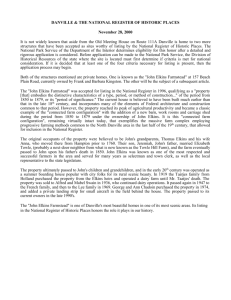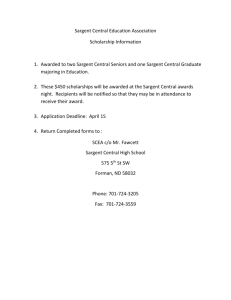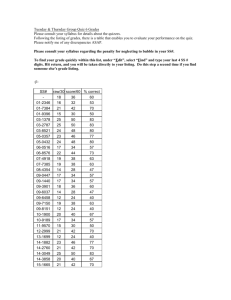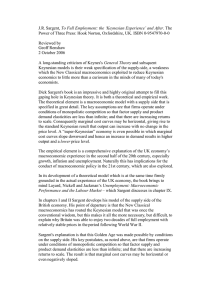danville & the national register of historic places ii
advertisement
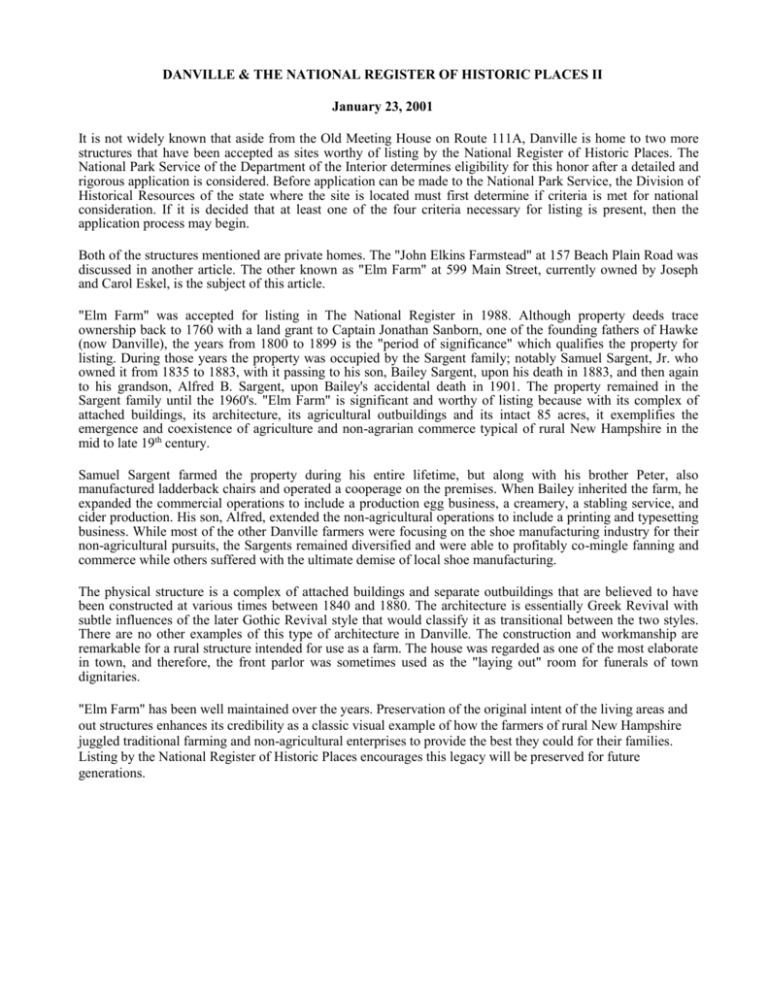
DANVILLE & THE NATIONAL REGISTER OF HISTORIC PLACES II January 23, 2001 It is not widely known that aside from the Old Meeting House on Route 111A, Danville is home to two more structures that have been accepted as sites worthy of listing by the National Register of Historic Places. The National Park Service of the Department of the Interior determines eligibility for this honor after a detailed and rigorous application is considered. Before application can be made to the National Park Service, the Division of Historical Resources of the state where the site is located must first determine if criteria is met for national consideration. If it is decided that at least one of the four criteria necessary for listing is present, then the application process may begin. Both of the structures mentioned are private homes. The "John Elkins Farmstead" at 157 Beach Plain Road was discussed in another article. The other known as "Elm Farm" at 599 Main Street, currently owned by Joseph and Carol Eskel, is the subject of this article. "Elm Farm" was accepted for listing in The National Register in 1988. Although property deeds trace ownership back to 1760 with a land grant to Captain Jonathan Sanborn, one of the founding fathers of Hawke (now Danville), the years from 1800 to 1899 is the "period of significance" which qualifies the property for listing. During those years the property was occupied by the Sargent family; notably Samuel Sargent, Jr. who owned it from 1835 to 1883, with it passing to his son, Bailey Sargent, upon his death in 1883, and then again to his grandson, Alfred B. Sargent, upon Bailey's accidental death in 1901. The property remained in the Sargent family until the 1960's. "Elm Farm" is significant and worthy of listing because with its complex of attached buildings, its architecture, its agricultural outbuildings and its intact 85 acres, it exemplifies the emergence and coexistence of agriculture and non-agrarian commerce typical of rural New Hampshire in the mid to late 19th century. Samuel Sargent farmed the property during his entire lifetime, but along with his brother Peter, also manufactured ladderback chairs and operated a cooperage on the premises. When Bailey inherited the farm, he expanded the commercial operations to include a production egg business, a creamery, a stabling service, and cider production. His son, Alfred, extended the non-agricultural operations to include a printing and typesetting business. While most of the other Danville farmers were focusing on the shoe manufacturing industry for their non-agricultural pursuits, the Sargents remained diversified and were able to profitably co-mingle fanning and commerce while others suffered with the ultimate demise of local shoe manufacturing. The physical structure is a complex of attached buildings and separate outbuildings that are believed to have been constructed at various times between 1840 and 1880. The architecture is essentially Greek Revival with subtle influences of the later Gothic Revival style that would classify it as transitional between the two styles. There are no other examples of this type of architecture in Danville. The construction and workmanship are remarkable for a rural structure intended for use as a farm. The house was regarded as one of the most elaborate in town, and therefore, the front parlor was sometimes used as the "laying out" room for funerals of town dignitaries. "Elm Farm" has been well maintained over the years. Preservation of the original intent of the living areas and out structures enhances its credibility as a classic visual example of how the farmers of rural New Hampshire juggled traditional farming and non-agricultural enterprises to provide the best they could for their families. Listing by the National Register of Historic Places encourages this legacy will be preserved for future generations.
